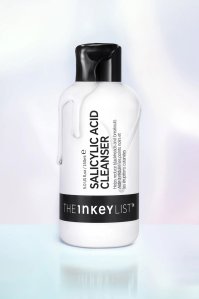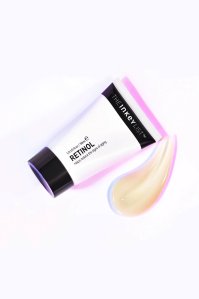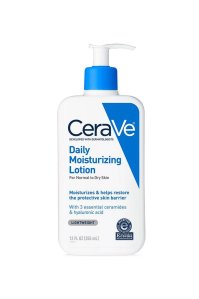It goes without saying that dealing with acne is already difficult. However, the fallout from acne – such as scarring and hyperpigmentation – can sadly sometimes be even worse.
If you’re experiencing acne scarring there are several things you can do to help, but I’ll be honest: the very best way to manage scarring is to prevent scars from forming in the first place. More on that later…
How do acne scars form?
Let’s start with the basics. Whenever we get a spot, it inflames the surrounding skin. The larger and deeper the spot, the worse the inflammation.
This inflammation damages the surrounding skin and eventually leads to breaks in the skin’s barrier; these breaks are a perfect route of entry for bacteria, pollution and other external aggressors.
The skin rapidly attempts to heal over these breaks to protect its barrier but unfortunately, it is not always able to in a uniform way and instead of smooth skin, you get lumps, bumps and grooves instead. This is acne scarring.
What are the different types of acne scarring?
There are several different types, but you can roughly split them into the following:
1. Atrophic scars: these are pitted into the skin and can either be narrow or deep. They occur when there hasn’t been enough wound healing over the damaged tissue.
2. Hypertropic scars: these happen when there has been too much wound healing, and the scars are raised to the surface of the skin.
3. Keloid scars: this type of scar happens when there is healing outside of the area of initial tissue injury, which then leads to very large, pigmented, irregular scars.
How can you manage acne scarring?
Prevention
I won’t lie: acne scars are certainly difficult to get rid of. In many cases, you may not be able to erase them at all, but there are many steps you can take to reduce their appearance.
My first (and most important) piece of advice is to see your doctor. If your acne is now severe enough that it is leaving behind scarring and hyperpigmentation, these are signs that you may need prescription-strength medications and possibly even a dermatology referral.
This step is vital and the most cost-effective way to prevent further acne lesions from developing into
scars.
As well as support from your doctor, you will need an excellent skincare routine at home for further prevention of acne.
Cleanse your skin with a great salicylic acid product, and treat with multi-tasking ingredients such as retinol and niacinamide – these can help manage oil production and acne, as well as directly reducing the dark marks that come hand-in-hand with scarring. Finish by always moisturising skin to strengthen your its barrier.




*Eliza may earn commission on sales from these product links
Treatment
Whilst prevention is ideal, you will likely need advanced action to resurface the skin fully with regards to treatment. The following work well for scarring:
- Microneedling: this is where a derma-roller containing multiple fine needles is applied to the skin. It causes controlled skin injury, which sends signals to the skin that helps it to heal in a uniform way.
- Chemical peels: peels containing ingredients like glycolic acid or trichloroacetic acid (TCA) help to remove the upper layer of dead and dying skin cells to reveal younger, fresher skin underneath. They can also help to stimulate the production of collagen in the skin. Chemical peels are great to use alongside microneedling.
- Lasers: lasers have a similar concept to microneedling, where the skin is injured in a targeted way to allow for natural self healing.
Other advanced treatments include hyaluronic acid injections, dermabrasion and cryotherapy. Speak to your GP or aesthetician to discuss which treatments will work best your skin.
Want to know more? Follow me @dr.fab and check out my next column in two weeks time!










